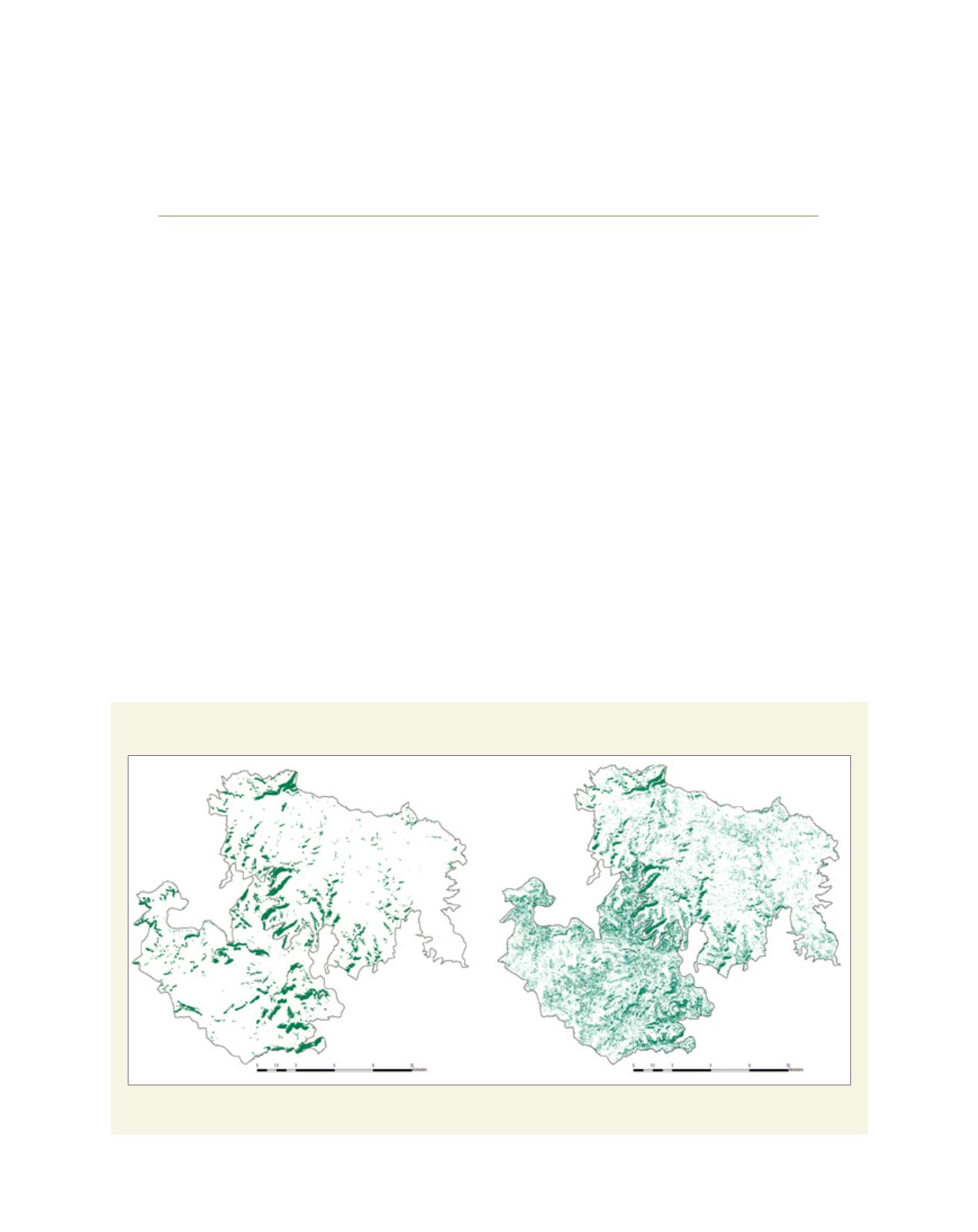

[
] 175
Reclaiming degraded lands and building resilience
to climate change in Maharashtra, India
Dr Marcella D’souza, Executive Director and Karan Misquitta, Researcher, Watershed Organisation Trust
Satellite image analysis of the Sangamner cluster project villages shows an increase in the area under vegetation cover
Source: WOTR
D
rylands constitute 69 per cent of India’s total area.
These are heavily populated regions where the live-
lihoods of the inhabitants are vulnerable as they
depend on a natural resource base that is degraded and
deforested. According to the National Bureau of Soil Survey
and Land Use Planning, an area of 146.82 million hectares
is reported to be suffering from various kinds of land
degradation, with erosion caused by water alone contrib-
uting to about 61.7 per cent and wind erosion contributing
to 10.24 per cent. Much of this is reversible or can be
arrested, as dryland regions and degraded ecosystems can
be significantly improved by participatory and integrated
management of water and natural resources. However,
management of dryland resources must be viewed from the
broader climatic and socioeconomic context.
The Watershed Organization Trust (WOTR) has played an
important role in developing techno-participatory approaches
to watershed development that have proven to significantly
conserve soil and water and improve land productivity.
Importantly, WOTR has always focused on developing scala-
ble and replicable interventions and has directly and indirectly
implemented and supported successful watershed develop-
ment across 83,857 km
2
in 1,422 villages in seven states of
India, benefiting over 1.2 million people.
However, it has been observed that unless climate change
adaptation is factored into project design, weather variations
will continue to obstruct progress and development. Hence, in
2009WOTR included weather uncertainties into project design.
There follows below an account of the impact in 16 villages, in
the Sangamner Block of Ahmednagar, of a climate change adap-
tation (CCA) project implemented by WOTR and supported
by the Swiss Agency for Development and Cooperation (SDC)
and the National Bank for Agriculture and Rural Development
(NABARD). The findings described are the results obtained
from various studies, impact assessments and reports.
Ahmednagar district, Maharashtra, lies in the dry semi-arid
rain shadow of the Western Ghats. The land has little biomass
Dec 2008
Dec 2013
Total area: 16,050 ha
L
iving
L
and
















